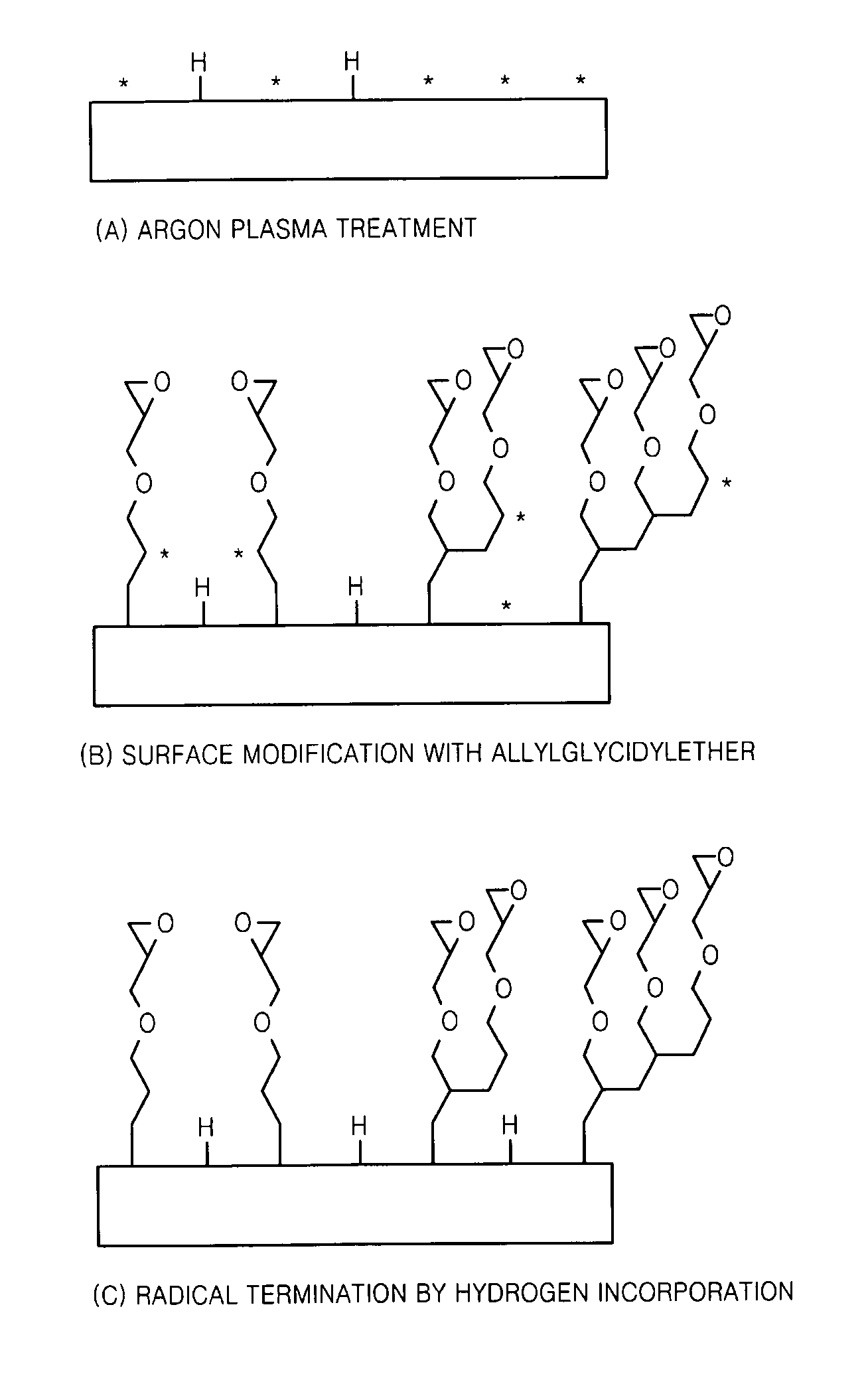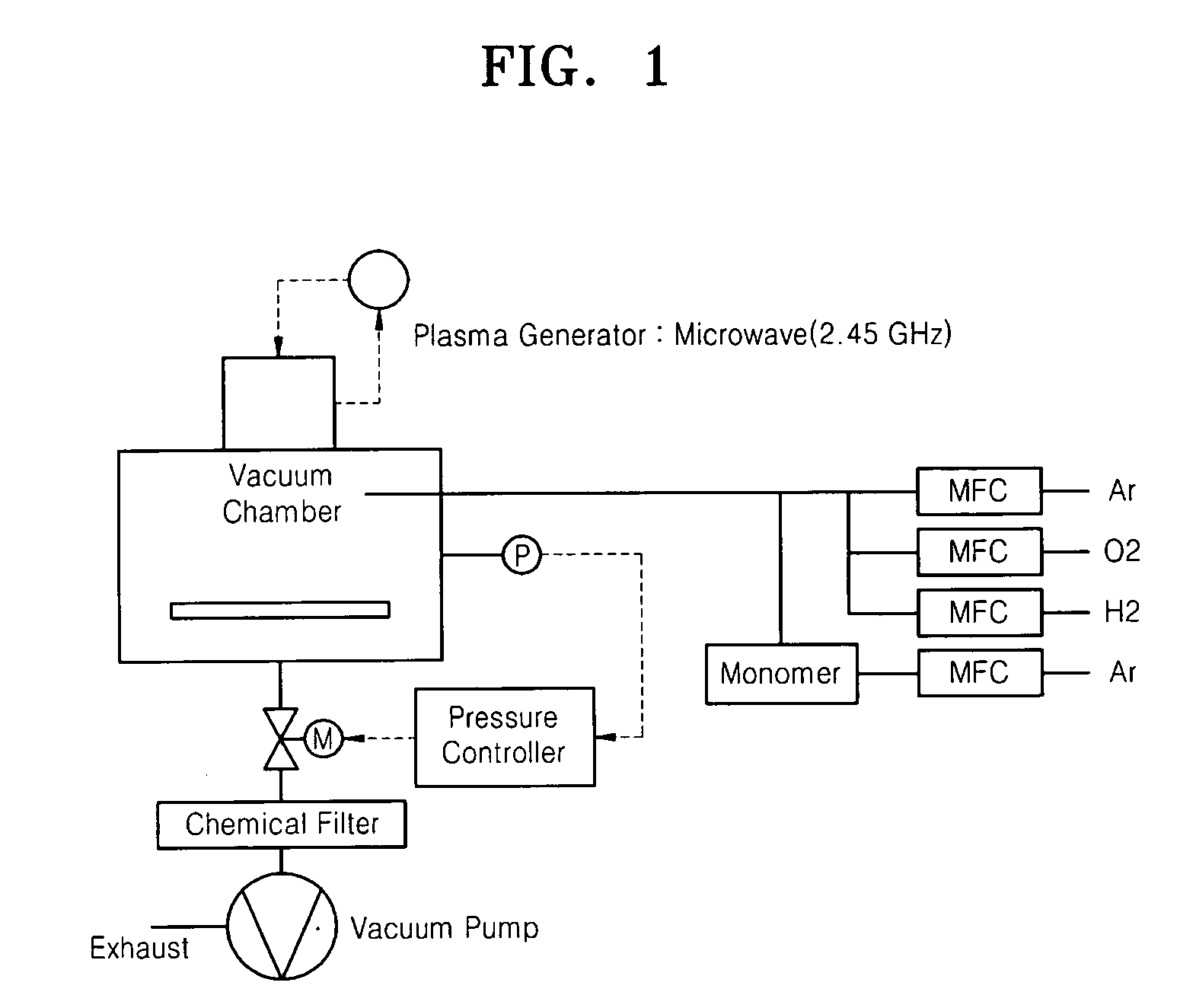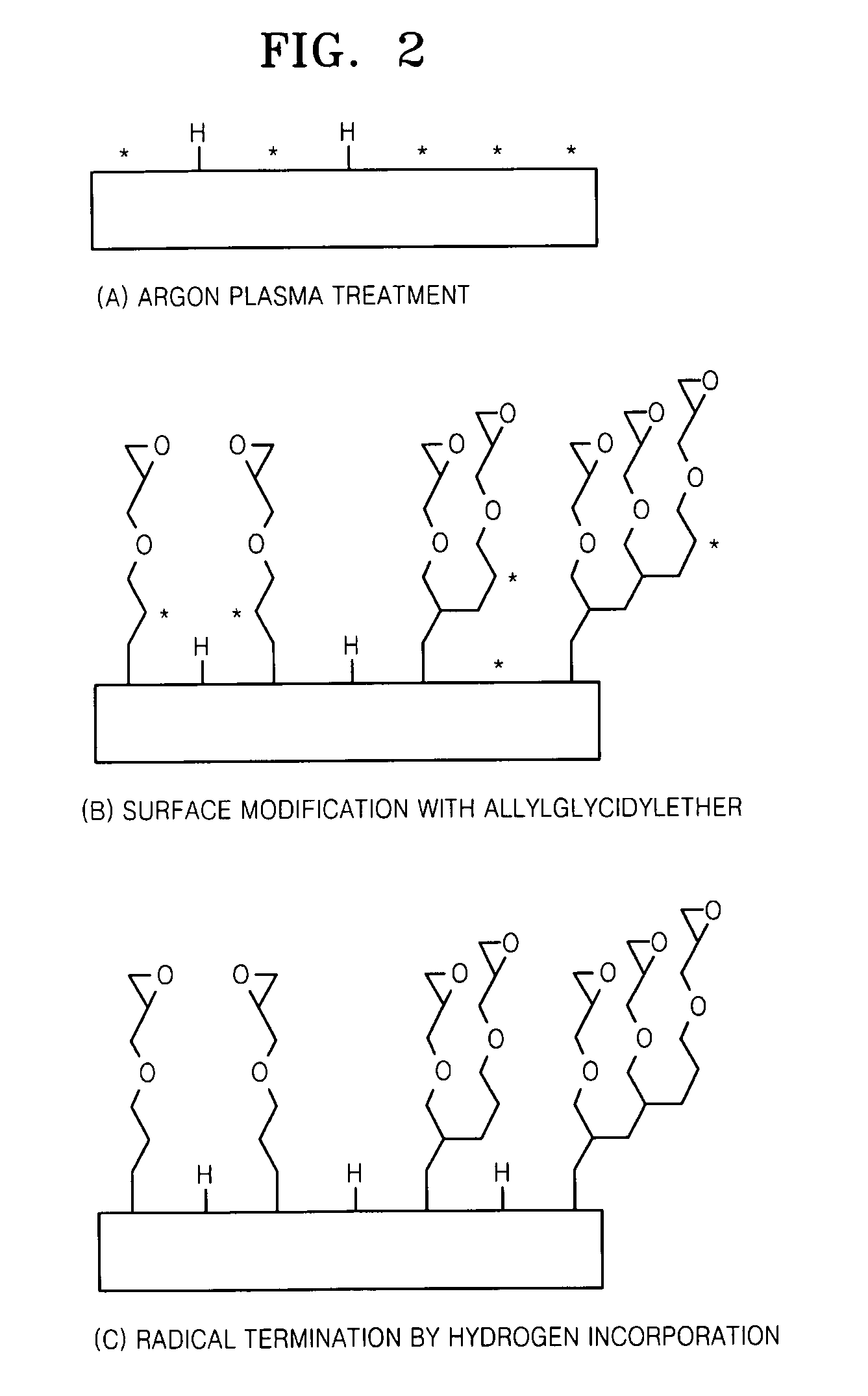Method of manufacturing plastic substrate using plasma process and plastic substrate manufactured using the method
a technology which is applied in the field of plasma process and plastic substrate manufacturing using the method, can solve the problems of low specificity of plastic substrate for detection, difficult to achieve partially different microscale surface modification, and limited application, and achieve good specificity for detection
- Summary
- Abstract
- Description
- Claims
- Application Information
AI Technical Summary
Benefits of technology
Problems solved by technology
Method used
Image
Examples
example 1
[0054] Evaluation of Auto-fluorescence According to Surface Roughness
[0055] In order to determine an effect of the surface roughness of a plastic substrate on auto-fluorescence, plastic substrates made of PS 15 NFI resin (LG Chemical Ltd., Korea) were manufactured using a mold with a generally mirror-finished surface and a mold with a mirror-finished surface of an optical lens grade.
[0056] The surface roughness of the plastic substrates thus manufactured was measured using an AFM. The critical value of the surface roughness was as follows: Ra=3 nm or Rq=4 nm under the condition of 50 μm×50 μm.
[0057] The auto-fluorescence from the plastic substrates was measured using a GenePix 4000B scanner (Axon). The auto-fluorescence measurement conditions were as follows: laser power of 100% and PhotoMultiplier Tube (PMT) level of 600.
[0058] The experimental results are presented in Table 1 below. As shown in Table 1, with respect to 532 nm laser irradiation, the level of auto-fluorescence f...
example 2
[0060] Evaluation of Auto-fluorescence According to the Type of PS Resin
[0061] In order to evaluate the level of auto-fluorescence according to the type of PS resin, plastic substrates were manufactured using three commercially available PS resins, i.e., LG Chemical PS 15NFI, LG Chemical PS 25SPI, and BASF PS 147F. At this time, molds with a mirror-finished surface of an optical lens grade were used, and the auto-fluorescence measurement conditions were the same as those in Example 1.
[0062] The experimental results are presented in Table 2 below. As shown in Table 2, the levels of auto-fluorescence from the plastic substrates made of the three PS resins were significantly different. The level of auto-fluorescence from the plastic substrate made of LG Chemical PS 15NFI was the lowest. Such low auto-fluorescence of the plastic substrate made of LG Chemical PS 15NFI might be attributed to both the additives contained in the PS resin and very little local thermal decomposition and res...
example 3
[0063] Evaluation of Auto-fluorescence According to Plasma Treatment Time
[0064] Plastic substrates made of LG Chemical PS 15NFI resin were manufactured using molds with a mirror-finished surface of an optical lens grade in the same manner as in Example 1, and auto-fluorescence from the plastic substrates was measured according to a plasma treatment time.
[0065] A plasma generating apparatus used for the plasma treatment is schematically illustrated in FIG. 1. The plasma treatment was performed at an argon flow rate of 30 cc / min, under pressure of 20 Pa, with plasma power of 100 W, for up to 30 minutes at 5-minute intervals. At this time, a plasma energy density was 1.12×108 J / kg. Auto-fluorescence measurement conditions were the same as those in Example 1.
[0066] The experimental results are presented in Table 3 below. As shown in Table 3, the level of auto-fluorescence from the plastic substrates was increased with a linear increment of about 110 per one minute.
TABLE 3Plasma tre...
PUM
| Property | Measurement | Unit |
|---|---|---|
| Frequency | aaaaa | aaaaa |
| Frequency | aaaaa | aaaaa |
| Boiling point | aaaaa | aaaaa |
Abstract
Description
Claims
Application Information
 Login to View More
Login to View More - R&D
- Intellectual Property
- Life Sciences
- Materials
- Tech Scout
- Unparalleled Data Quality
- Higher Quality Content
- 60% Fewer Hallucinations
Browse by: Latest US Patents, China's latest patents, Technical Efficacy Thesaurus, Application Domain, Technology Topic, Popular Technical Reports.
© 2025 PatSnap. All rights reserved.Legal|Privacy policy|Modern Slavery Act Transparency Statement|Sitemap|About US| Contact US: help@patsnap.com



